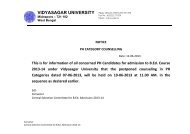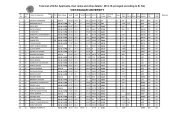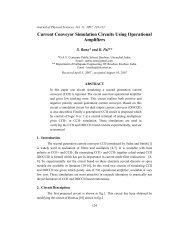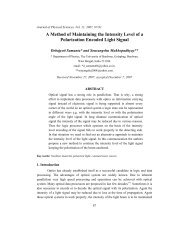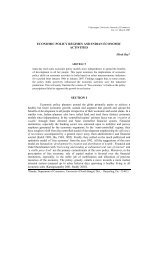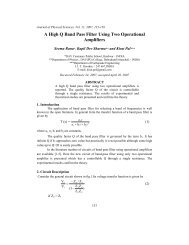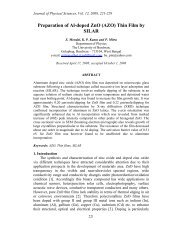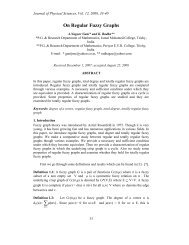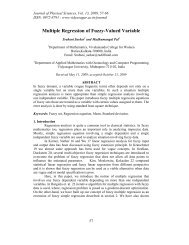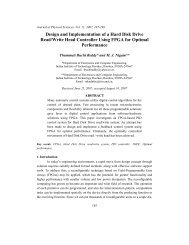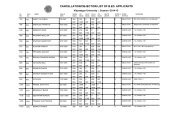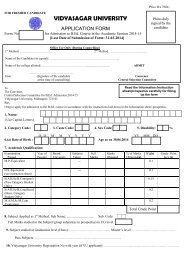VIDYASAGAR UNIVERSITY JOURNAL OF COMMERCE
VIDYASAGAR UNIVERSITY JOURNAL OF COMMERCE
VIDYASAGAR UNIVERSITY JOURNAL OF COMMERCE
Create successful ePaper yourself
Turn your PDF publications into a flip-book with our unique Google optimized e-Paper software.
Arindam Gupta, Debashis Kundu<br />
study thus supports the findings of most of the earlier studies that EVA is very closely<br />
related to MVA.<br />
Incremental regression analyses are carried out next taking into account one additional<br />
independent variable at each next stage. This has just been presented to compare the results<br />
between two sets of variables, the present set having their original values with no exercise of<br />
making them trend-free and the other set with some variables likely with their residual<br />
values after eliminating the trend effect along with the other variables with their original<br />
values. After this analysis being undertaken, it is observed that EVA does not appear to be<br />
significant in all cases of inclusion yet in most cases. (Tables 4 and 7)<br />
The results of the Runs tests at the 5% level of significance indicate that four variables, viz.,<br />
MVA, Market Capitalization, Capital Employed and Yield have significant runs in their<br />
series of values. Hence these variables are interpreted to be non-random in nature with<br />
significant influence of time. (Table 5)<br />
At the next stage, log-linear trend was found to be best-fitted for MVA and Market<br />
Capitalization whereas ordinary least square (OLS) trend was found to be best-fitted for<br />
Capital Employed and Yield on the basis of a mutual judgment of the Adj. R 2 and D-W<br />
statistic values of the three alternative trend equations for all the four non-random variables.<br />
(Table 6)<br />
After considering therefrom the residual values of the four non-random variables and the<br />
original values of the other remaining random variables, as described in an earlier paragraph<br />
as the other set, incremental regression analyses are carried out taking into account one<br />
additional independent variable at each next stage. Residual value of Market Capitalization<br />
appears to be the most significant variable in all the stages. (Table 7)<br />
In both sets of variables, due to insufficient data of a case study like work, the final<br />
regression results do not give a clear picture when all the explanatory variables are taken into<br />
consideration. (Tables 4 and 7)<br />
Since EVA is known to depend on variables like capital employed, yield, relative<br />
profitability etc., the next table (Table 8) regresses those variables on EVA. Residual yield is<br />
found to have the only statistically significant effect on EVA among all the other variables.<br />
However, in the next multiple regression, (Table 9), none of the explanatory variables turn<br />
out to be statistically significant.<br />
Conclusion<br />
The above findings point out the success of the merger both for the Bank and also for its<br />
shareholders. The five completed years since the merger shows that though ICICI Bank was<br />
able to successfully consummate the first reverse merger of India, its effect on profitability<br />
was not much to talk about. But for the shareholders, the story was a bit different.<br />
Both EVA and MVA – the new generation wealth measurement tools – have shown robust<br />
growth over the 7-year period. The brief anomaly in a single year was merely due to the<br />
adjustment process the Bank was going through. On the question of profitability in its<br />
absolute term, the bank has shown satisfactory result in the post-merger time period. Hence<br />
it can be safely concluded that the reverse merger of ICICI Ltd. with ICICI Bank was able to<br />
Vidyasagar University Journal of Commerce 73



